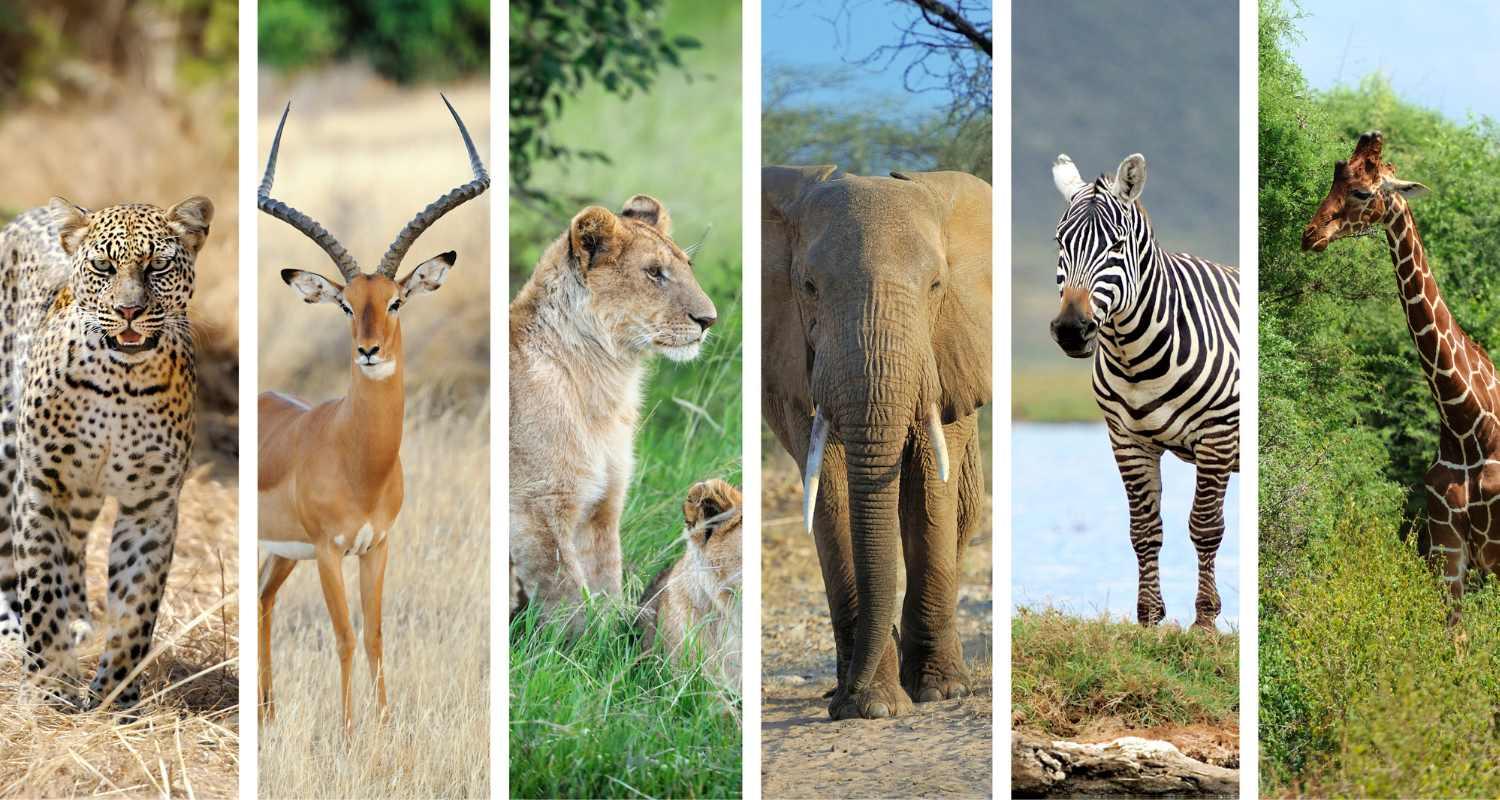
Ensuring the use of wild species benefits people
Observed annually on 3 March, World Wildlife Day is an opportunity for us to celebrate the diverse range of wild animals and plants and to recognise their contribution to our lives. Despite widespread support for the preservation of wildlife, there is a diminished zeal for its use and a lack of understanding of its role in supporting human life.
This dilemma unfolds against the backdrop of a global endeavour to guarantee the sustainable, secure and lawful use of wildlife — a goal rich with potential yet obstructed by the lack of effective mechanisms to turn aspirations into tangible outcomes.
The mandate for wildlife use has been articulated in international policies and strategies for decades, and most recently in the Kunming-Montreal Global Biodiversity Framework (GBF). Launched in December 2022 by the more than 180 Parties to the Convention on Biological Diversity, the GBF envisions a world in which we “live in harmony with nature.” Some see this as living side-by-side with nature, as geographically expressed by systems of protected areas managed to protect wildlife from people. Others see this as integrating nature into the way we live and how we live as well as supporting life (including human life) in complex ecosystems.
The GBF attempts to align both views by calling for an increase in conservation areas — either through systems of protected areas or other area-based conservation measures — where any use of wildlife needs to support the conservation objectives of these areas. Further, the GBF explicitly calls for using wild species to benefit people. This is set out in GBF Targets 5 and 9 which call on governments to ensure that the harvesting, use and trade of wild species is sustainable, safe, legal and provides benefits for people.
Although there are a number of online databases (for example, the IUCN Red List, Species+, the CITES Trade Database, and the Species Use Database) providing interesting and useful information on the status of wild species, these do not offer insights into how to achieve sustainable, safe and legal use for the benefit of people. Nevertheless, the databases do show the conservation status of many species and the reasons they may be harvested, used and traded.
Unsurprisingly, this raises the following questions: what systems are needed to ensure that harvesting, use and trade of wild species are sustainable, safe, legal, and beneficial? How can consumers, investors, regulators and citizens be assured of these outcomes?
For wild animals and plants deemed to be threatened by international trade, a well-established system of trading permits under the Convention on International Trade in Endangered Species of Wild Fauna and Flora (CITES) provides some assurance. The CITES system of trading permits for listed species is based on assessments that the trade will not be detrimental to the survival of the species and that the wild product has been legally acquired.
Thus, CITES addresses the sustainability and legality of wild species use from a trade perspective, but only for species that have been listed as threatened. Although there are ongoing discussions on whether and how CITES could also address safety and benefits for people, these matters are not yet directly incorporated into the permitting system.
Also, the CITES system is only for threatened species and does not provide assurance about the trade of other species not listed by CITES. Further, even for listed species, CITES places an unfunded burden on governments to establish Management and Scientific Authorities to undertake assessments, issue permits and monitor the effects of trade. The cost of this system is particularly a challenge for developing countries.
For most sectors of the economy, however, international agreements such as CITES are not the norm. Rather, assurance of socially and environmentally responsible production and trade is provided by voluntary standards and certification schemes. For example, we are familiar with products that are certified organic or fair trade. There are hundreds of such sustainability standards, many of which can be found on the ITC Standards Map. But very few of these address the harvesting, use and trade of wild species.
Voluntary standards and certification schemes for wild species could also assist in the assessments for CITES trade permits. This opportunity was explored at a recent international workshop on developing guidance for CITES non-detriment findings. One of the workshop’s working groups discussed the use of the FairWild Standard for harvesting wild plants and the need to have a similar standard for harvesting wild animals.
The FairWild Standard addresses the sustainability, legality, and benefits for people from wild plant harvesting. In short, the “fair” addresses social benefits and the “wild” environmental benefits. As well, the Standard addresses business accountability and business responsibility concerning legal and safety requirements. Hence, the FairWild Standard supports the GBF Targets for the harvesting of all wild plants and also the trade of wild plants listed by CITES.
As discussed at the CITES workshop from 4 to 8 December 2023, robust voluntary standards such as FairWild could help governments, notably in developing countries, undertake the required assessments for issuing trade permits. They also assure people in the value chains of wildlife products — from harvesters and producers to traders and consumers and also to regulators and investors — that wild species use supports people to live in harmony with nature, reducing wildlife-human conflicts. FairWild, for example, not only aims to protect wild species but also the habitats and landscapes from where they come.
Finally, a key next step will be to use the Internet of Things and digital innovations and technologies to bring the sustainably harvested and legal wild products closer to people, ensuring traceability and limiting opportunities for illegally extracted products. It is, therefore, fitting that the theme for this year’s World Wildlife Day is “Connecting people and planet: Exploring digital innovation in wildlife conservation”. These technologies could provide information on species origin, certification status and reasons for trade. The Species+ database, for example, already has a phone app.
Further, the African Wildlife Economy Institute at Stellenbosch University is supporting the development a trading app for wild meat to connect ranchers, abattoirs, wholesalers and distributors, offering a platform for marketing legal and sustainably harvested wild animal products and potentially facilitating direct sales to people who need it the most. There is already a similar app for trading wild fish. Such digital innovations backed by international targets and voluntary standards will go a long way to ensuring that the use of wild species delivers conservation and benefits for people.
Dr Francis Vorhies is the director of the African Wildlife Economy Institute at Stellenbosch University and Dr Wiseman Ndlovu is the postdoctoral and programmes manager at AWEI.
Originally published in the Mail & Guardian on 3 March 2024 here.
-

-

Prof Francis Vorhies
Director & Professor Extraordinary
We support the free flow of information. Please share:
More content
-

What Foot and Mouth Disease-free means for South Africa’s game meat trade
Ms Lydia Daring Bhebe…Explore the latest developments in South African provinces achieving and maintaining Foot and Mouth Disease (FMD) free status…
Articles -

The world wildlife trade regulator is 50 – here’s what has worked and what needs to change
Daniel Challender…Most countries implement Cites, the Convention on International Trade in Endangered Species of Wild Fauna and Flora as…Articles -

Enabling Sustainable Wildlife Trade
Prof Francis VorhiesEnabling sustainable wildlife trade is a key policy measure for growing Africa's wildlife economy. In this respect, CITES…
Articles -

Has CITES become too complicated to be effective?
Prof Francis VorhiesGovernments agreed to the text of CITES in the 1970s, which is quite straightforward. However, the agreement’s implementation…
Articles -

From poachers to providers: Can Africa's wild meat market save wildlife?
Dr Wiseman NdlovuHave you ever considered how wild meat could be more than just a cultural staple but also a…
Articles -

As a fellow of the African Wildlife Economy Institute (AWEI), I am excited to attend the upcoming 3rd…
Articles -

A theory of change to improve conservation outcomes through CITES
Dr Michael 't Sas-Rolfes…Here we articulate the implied theory of change (ToC) underpinning the design and operation of CITES (Convention on...
2025Research -

Wild Meat Value Chain Integration Systems: Opportunities for Value Chain Formalisation and Scaling in Africa
Dr Wiseman Ndlovu…Establishing a legal, safe and sustainable wild meat sector promises to potentially reduce demand for illegally sourced meat...
2025Research -

AWEI's 2024 Wildlife Economy Dialogue Series
Ms Emily TaylorRediscover 2024: A year of insight and inspiration
In 2024, AWEI proudly hosted three ground-breaking dialogue series in…
Articles
Get updates by email
Through impactful research, stakeholder engagement, and professional development, AWEI is supporting the wildlife economy across Africa. Please subscribe for occasional updates on our work and forthcoming events.
Sign up for a quarterly dose of AWEI insights
In a complex and changing world, AWEI generates strategic ideas, conducts independent analysis on wildlife economies, and collaborates with global scholar-practitioners to provide training and expertise for biodiversity conservation, climate resilience, and inclusive economic opportunities in Africa.
